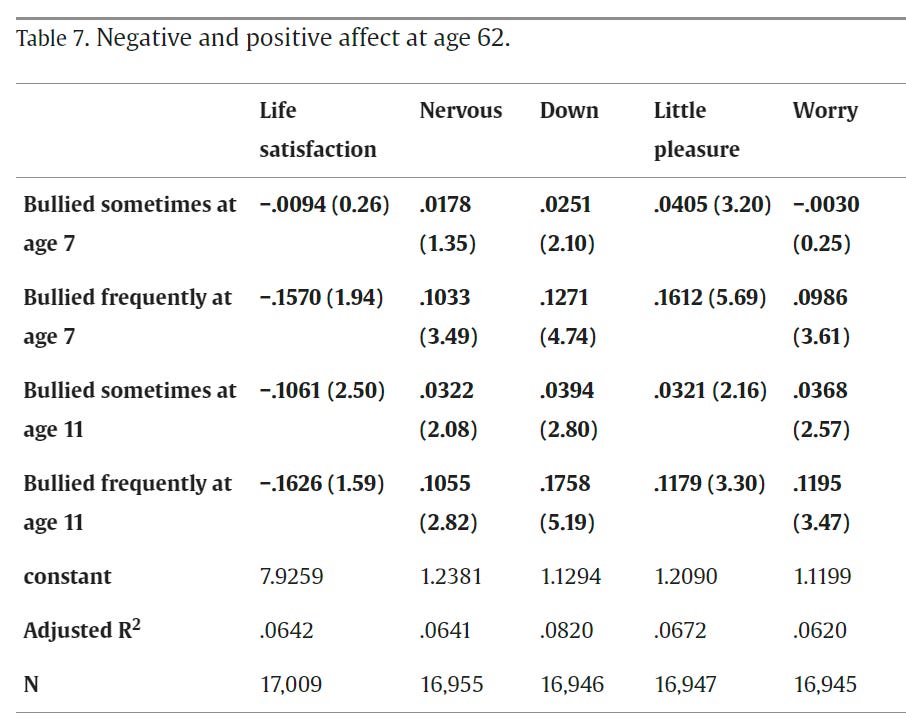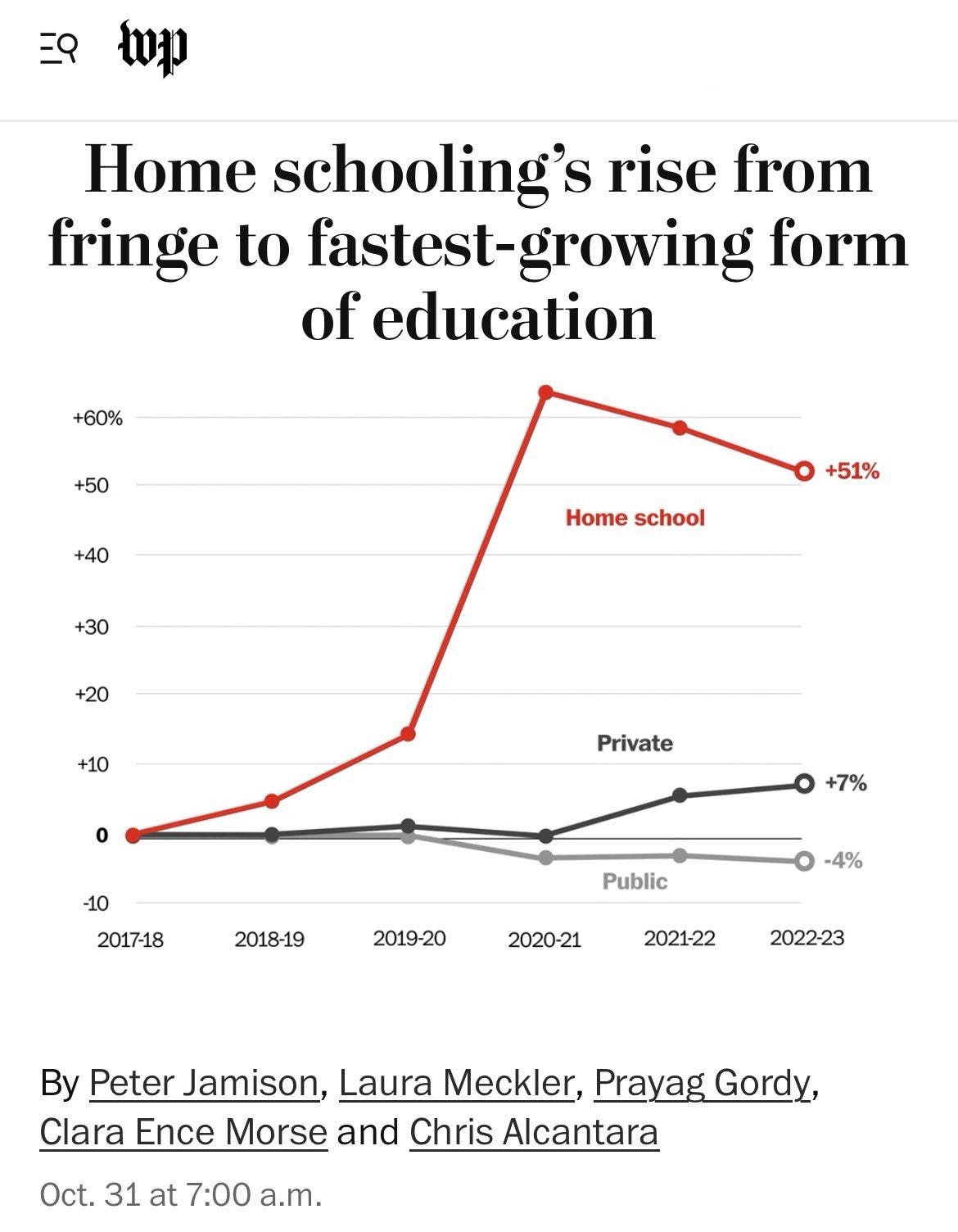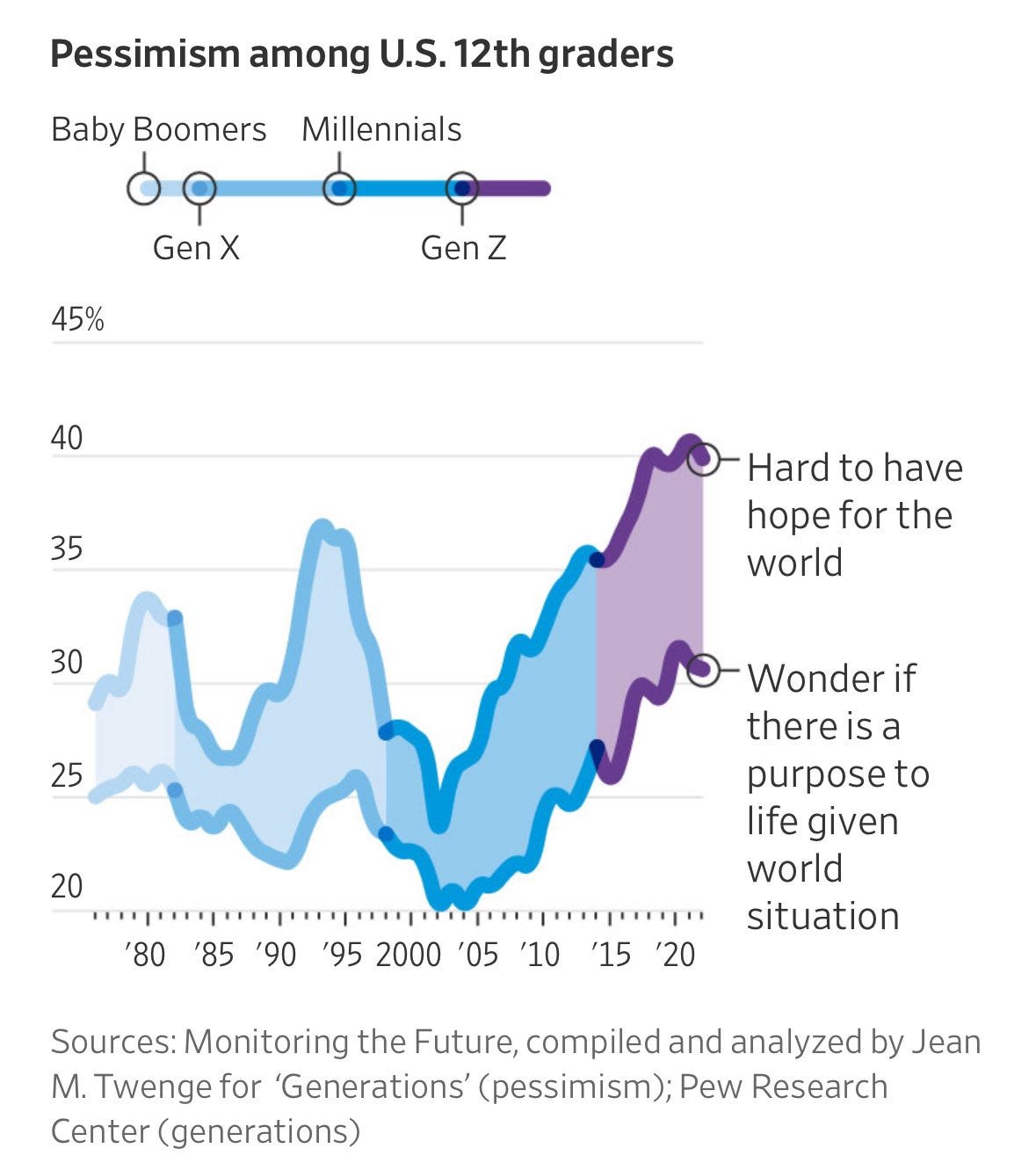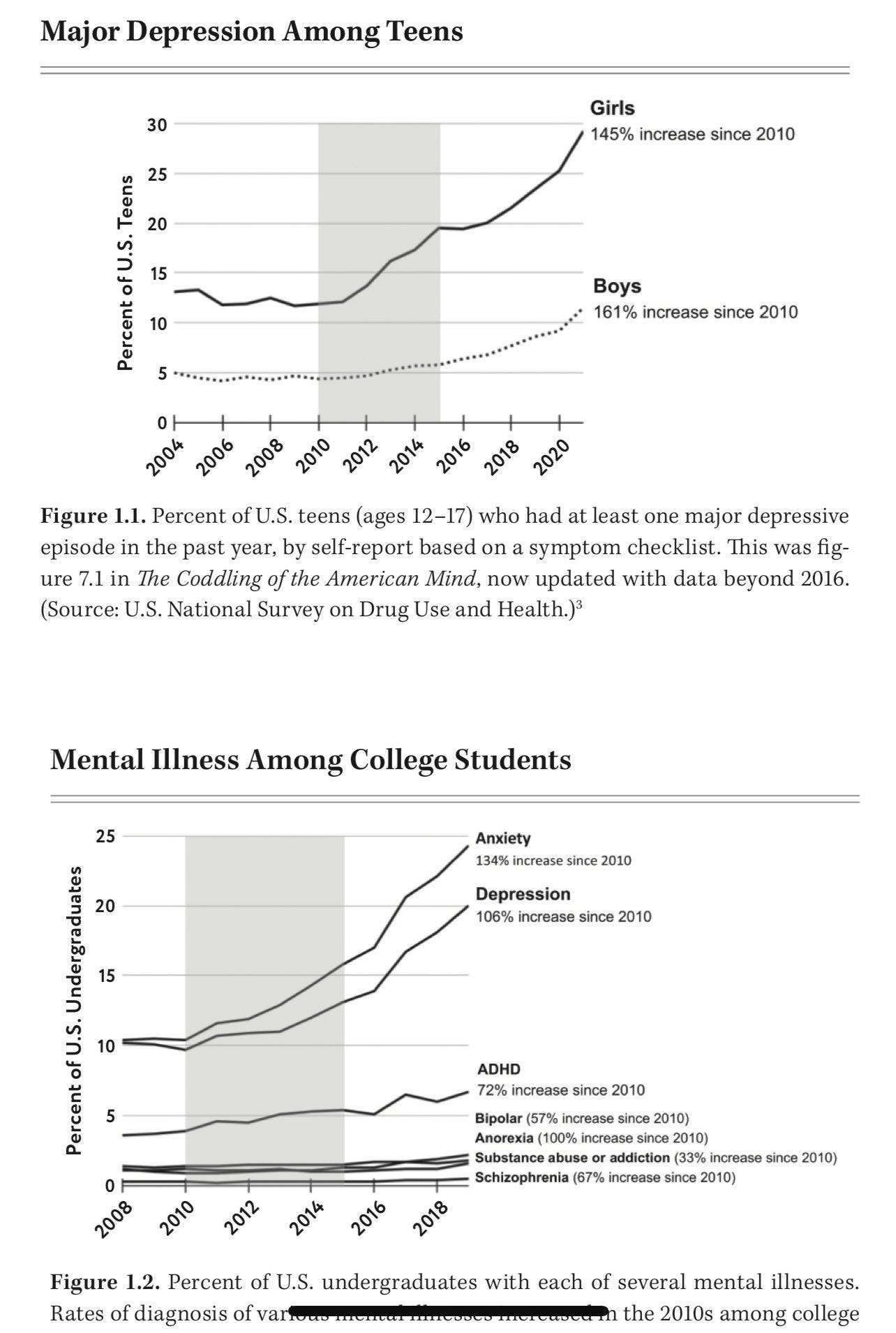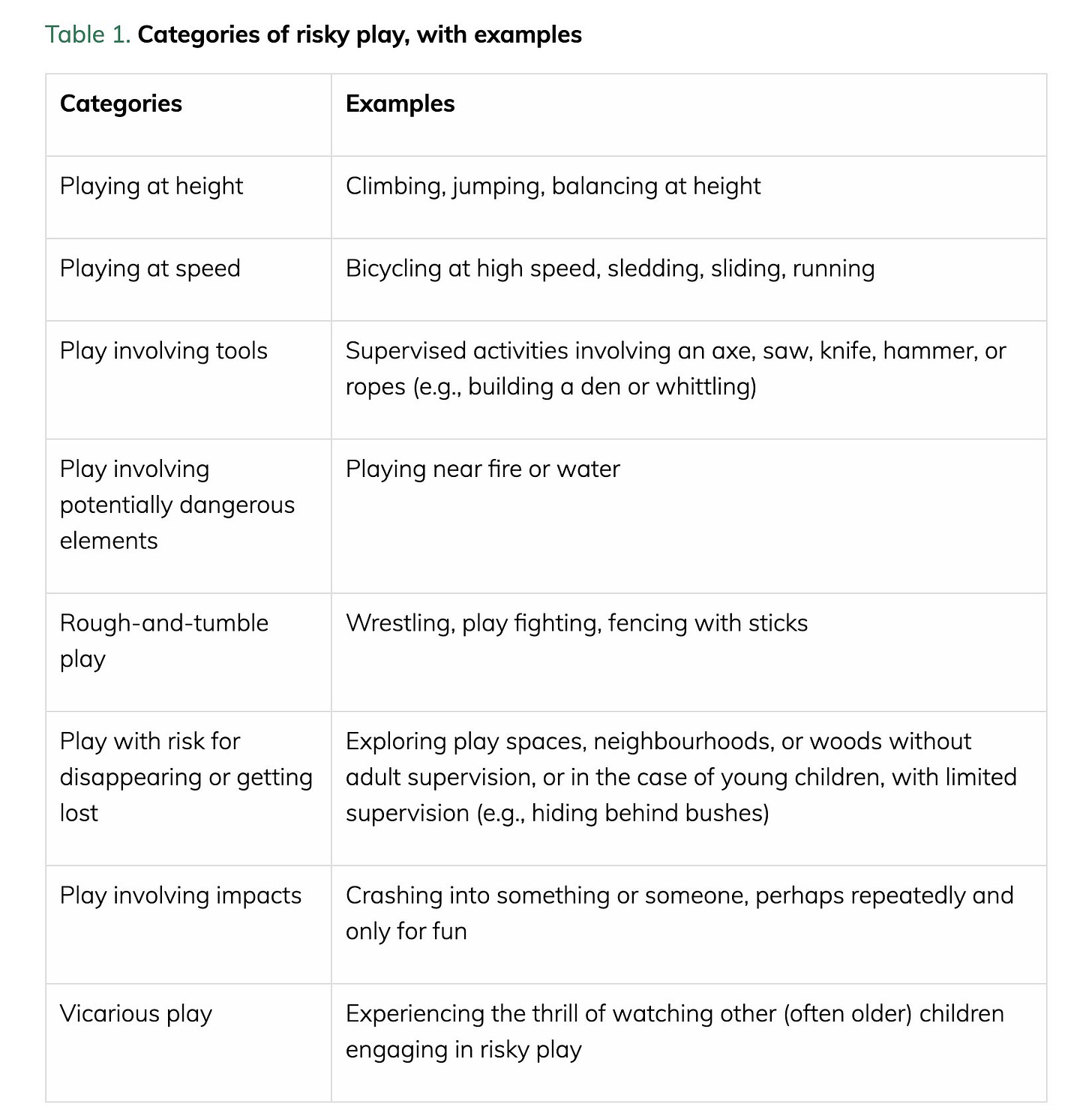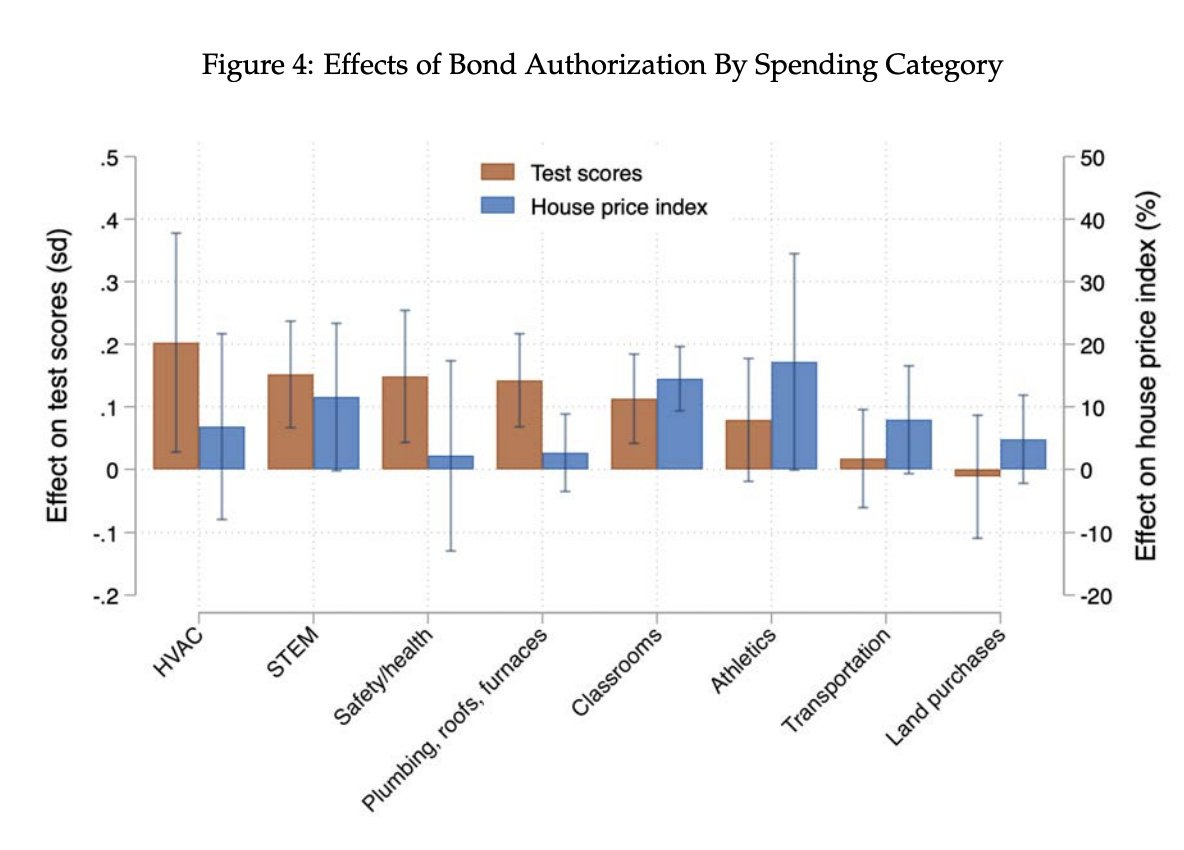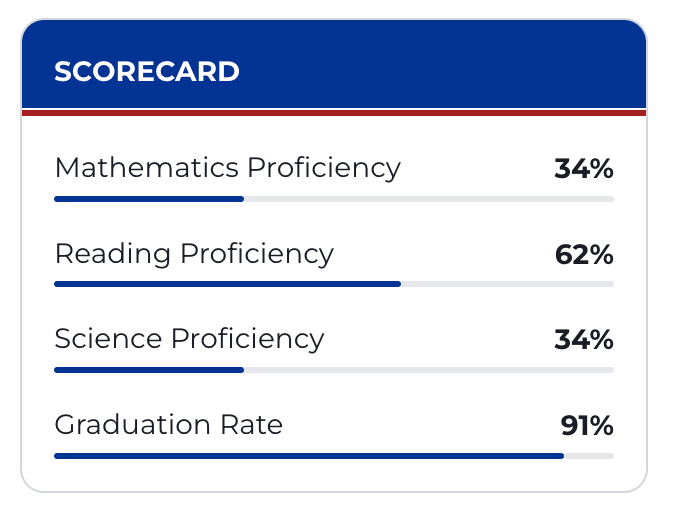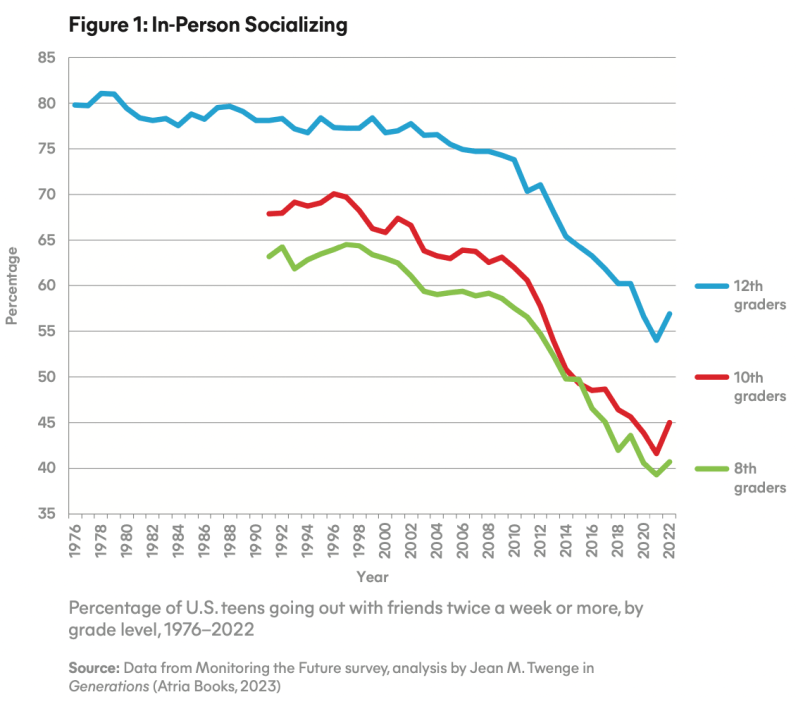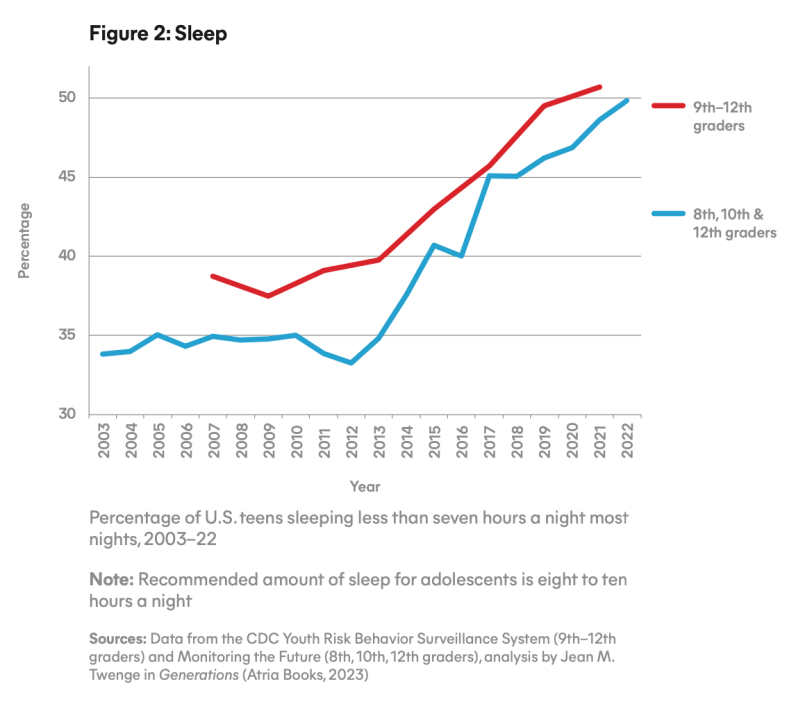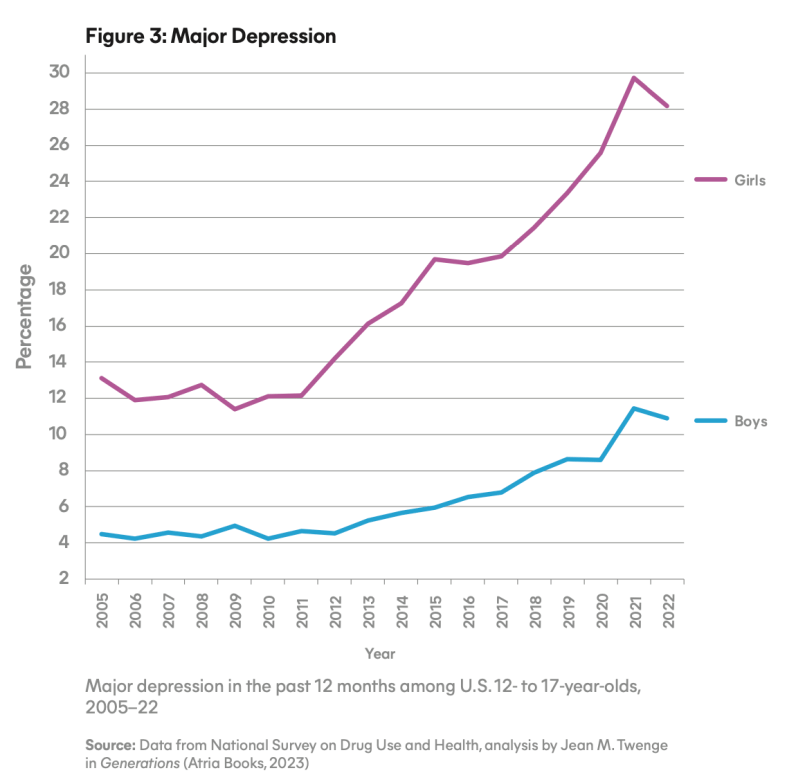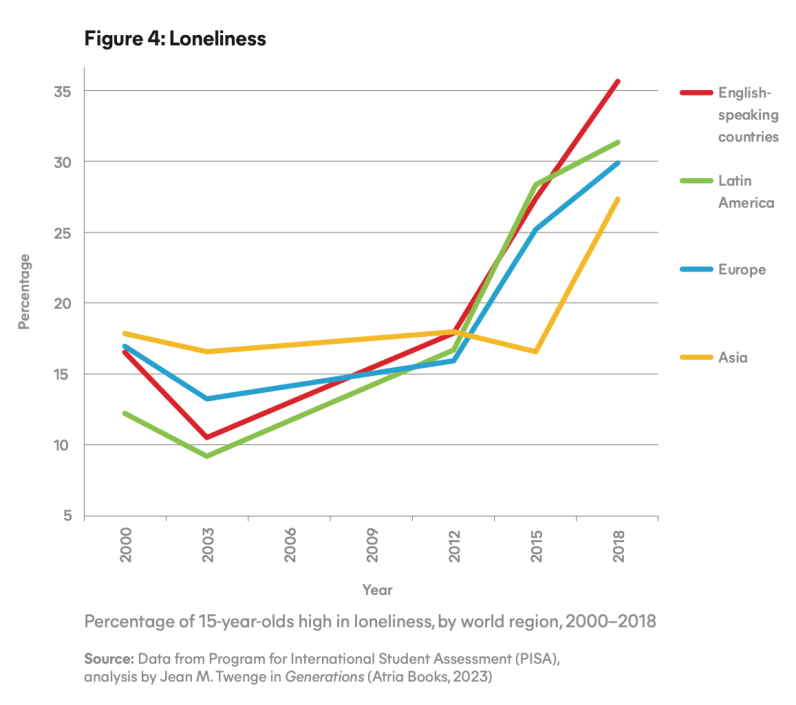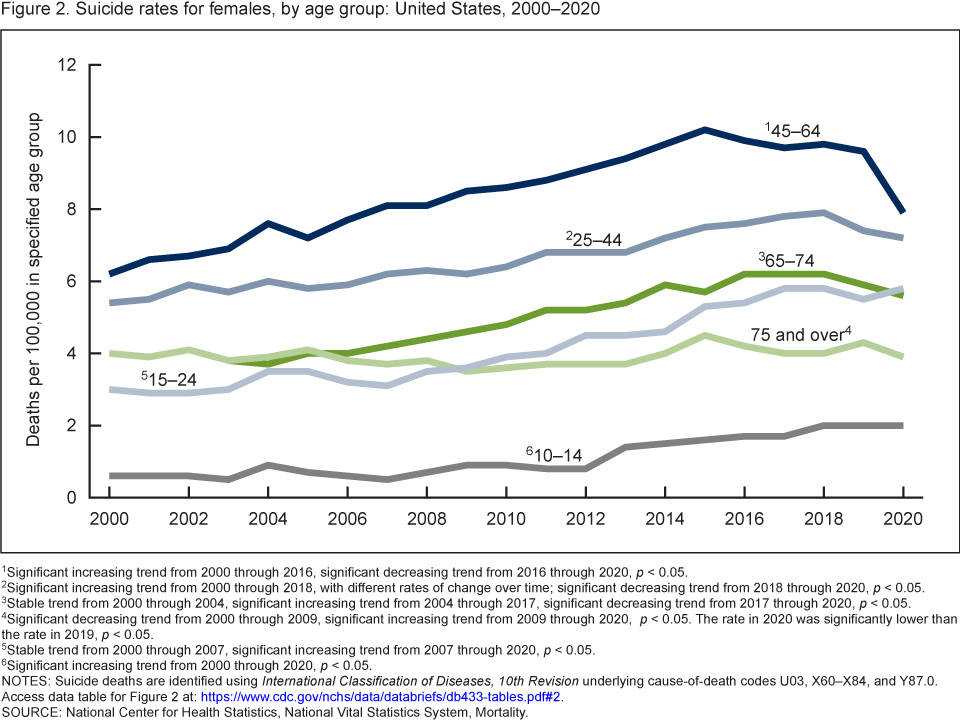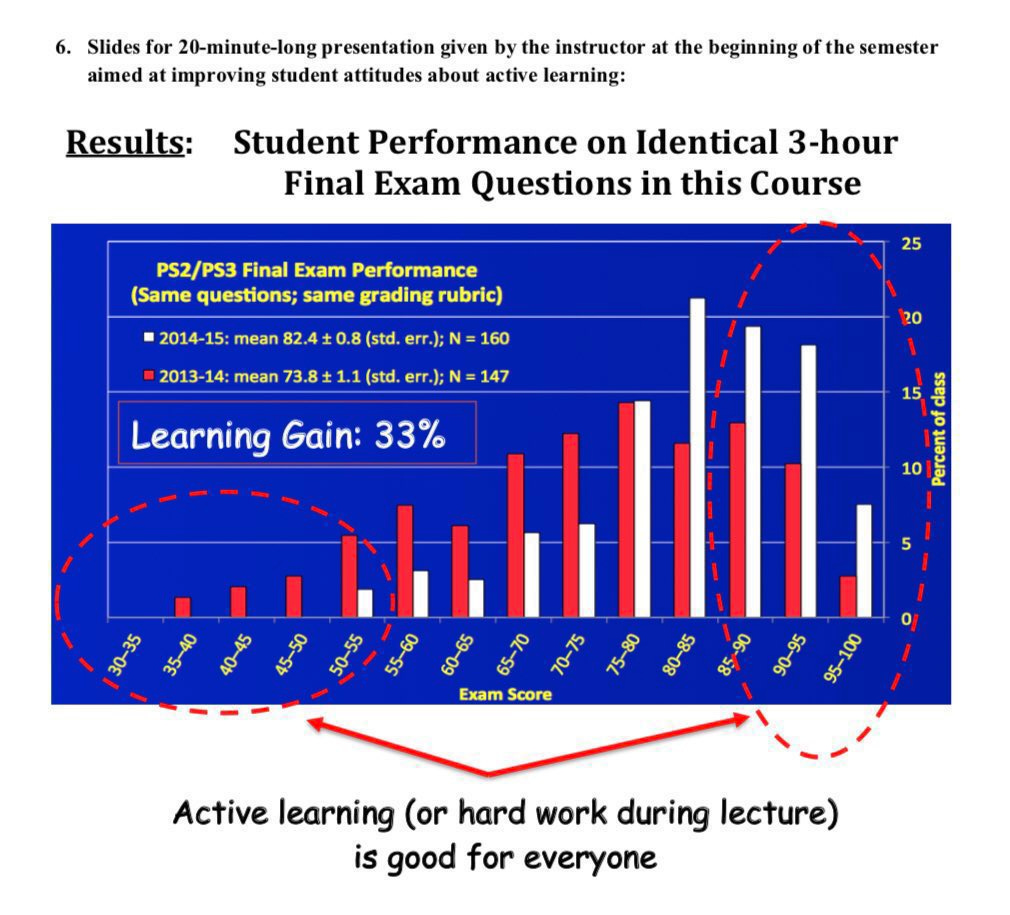For this iteration I will exclude discussions involving college or college admissions.
There has been a lot of that since the last time I did one of these, along with much that I need to be careful with lest I go out of my intended scope. It makes sense to do that as its own treatment another day.
Why do those who defend themselves against bullies so often get in more trouble than bullies? This is also true in other contexts but especially true in school. Thread is extensive, these are the highlights translated into my perspective. A lot of it is that a bully has experience and practice, they know how to work the system, they know what will cause a response, and they are picking the time and place to do something. The victim has to respond in the moment, and by responding causes conflict and trouble that no one wants. Also we are far more willing to punish generally rule-following people who break a rule, than we are to keep punishing someone who keeps breaking the rules all time, where it seems pointless.
Study finds bullying has lifelong negative effects.
Abstract: Most studies examining the impact of bullying on wellbeing in adulthood rely on retrospective measures of bullying and concentrate primarily on psychological outcomes. Instead, we examine the effects of bullying at ages 7 and 11, collected prospectively by the child’s mother, on subjective wellbeing, labour market prospects, and physical wellbeing over the life-course.
We exploit 12 sweeps of interview data through to age 62 for a cohort born in a single week in Britain in 1958. Bullying negatively impacts subjective well-being between ages 16 and 62 and raises the probability of mortality before age 55. It also lowers the probability of having a job in adulthood. These effects are independent of other adverse childhood experiences.
My worry, as usual, is that the controls are inadequate. Yes, there are some attempts here, but bullying is largely a function of how one responds to it, and one’s social status within the school, in ways that outside base factors will not account for properly.
Bullying sucks and should not be tolerated, but also bullies target ‘losers’ in various senses, so them having worse overall outcomes is not obviously due to the bullying. Causation is both common and cuts both ways.
Ever since Covid, schools have had to deal with lots of absenteeism and truancy. What to do? Matt Yglesias gives the obviously correct answer. If the norm is endangered, you must either give up the norm or enforce it. Should we accept high absentee rates from schools?
What we should not do is accept a new norm of non-enforcement purely because we are against enforcing rules. The pathological recent attachment to not enforcing rules needs to stop, across the board. The past version, however, had quite the obsession with attendance, escalating quickly to ‘threaten to ruin your life’ even if nothing was actually wrong. That does not make sense either.
Then in college everyone thinks skipping class is mostly no big deal, except for the few places they explicitly check and it is a huge deal. Weird.
I think the correct solution is that attendance is insurance. If you attend most of the classes and are non-disruptive, and are plausibly trying during that time, then we cut you a lot of slack and make it very hard to fail. If you do not attend most of the classes, then nothing bad happens to you automatically, but you are doing that At Your Own Risk. We will no longer save you if you do not pass the tests. If it is summer school for you, then so be it.
New York State is set to pass S6537, a long overdue bill summarized as follows:
Decreases the frequency of lock-down drills in schools; directs that such drills shall be implemented with a trauma-informed approach; permits parents to opt their children out of such drills.
Reduced frequency, from the currently required four per year (seriously what in the world? An actual 2% chance each school day that you will simulate getting shot at?) to one is a big win.
So is the opt out. I actively attempted to opt out when one of my sons was attending a public school and was told there was no legal way to do that. I hope most parents take that option once it is available, rendering the drills pointless or at least mostly harmless.
I also note that a ‘trauma-informed approach’ does seem better than a ‘trauma-uninformed’ approach, but also if you need a trauma-informed approach then this strongly suggests that the ‘trauma-informed’ approach to active shooter drills would be to… not have active shooter drills?
So yes, yay for a 75% reduction and opt out clause. Still 25% to go.
A study on what books are actually banned. A school library is much smaller than the set of books, or the set of age-appropriate reasonable-to-stock books. So any given library will ‘ban’ most books. The important question is what kinds of books are more likely to be stocked, not whether efforts conspicuously remove certain books sometimes. If books advocating your worldview and perspectives end up in lots of libraries, and those advocating mine don’t, then that is what matters.
If your controversial book is in 50% of school libraries but has been removed from 25% of them, and my controversial book was never in the libraries to begin with, whose has been banned?
Then again, if your book was not that interesting or popular, so we don’t care, that’s not a ban either. And of course, if no one checks the book out either way, it did not matter if you stocked it.
Mostly I noticed, when reading about this, that I care mostly about whether they stock good books, classic books, books I actively want people to read. All this talk about recent books that seem highly ephemeral, who cares, what I want to know is why only 75% of schools carried The Communist Manifesto, and be sure that 100% have The Wealth of Nations.
No, seriously, that is not me or anyone else putting on a label.
The organization is literally named Woke Kindergarden.
Carl: Woke Kindergarten is a real organization that sells their services to schools. Their mission is teach kids we can abolish work, landlords, Israel, and borders! One Bay Area school paid them 250k and watched student scores drop. Their “woke wonderings” are sadly hilarious.
Noah Smith: The craziest thing about “Woke Kindergarten” is that THAT IS ACTUALLY ITS REAL OFFICIAL NAME.
I never want to hear anyone complaining about the use of the term “woke” again 😂😂😂
Now, let’s not be too hasty, that 250k was over three years. So only 83.3k per year.
Included are some of those ‘wonderings’ that the government paid to put on classroom walls, the places children were forced to go on threat of violence:
To be fair, I do think that at least two of these are very good questions, although they seem a bit complicated and difficult for Kindergarten given I have never seen a plausible answer for either of them.
Anyone reading these signs knows what is going on here, but also: How many students can read these signs?
Here is their website, which highlights gems like:
And (these are directly from their website):
They follow this motto:
Do you… feel… safe?
Meanwhile, test scores fell even further, with less than 4% of students proficient in math and under 12% at grade level in English, both down 4% since the program started.
San Francisco Chronicle: District officials defended the program this past week, saying that Woke Kindergarten did what it was hired to do. The district pointed to improvements in attendance and suspension rates, and that the school was no longer on the state watch list, only to learn from the Chronicle that the school was not only still on the list but also had dropped to a lower level.
Matthew Yglesias calls for improving student tracking. He points out some obvious things I doubt anyone reading this fails to understand, that different kids that are the same age need different lessons and if you don’t do this many kids will be lost or bored, neither of which leads to learning.
He also notes that a lot of this is framing. If you call it ‘advanced coursework’ everyone realizes it is good but if you say the word ‘tracking’ people freak out. And that a lot of it is that there is a left-wing idea that standardized tests are racist.
He says that without standardized tests you can’t tell where to put different kids without risking huge bias. I think that is not true. There is a very simple way to do this, which is to let families choose, if they can pass the most recent test in the advanced class. If the kid is acing everything, you suggest moving them up. If the kid is failing, you urge them to move down. If they outright fail you force it. That is it.
I do not think this addresses anyone’s true objection, because I believe the true objection is that tracking is unequal. Those objecting for real, who actually don’t like such proposals, disagree with my and I hope your position that it is good when more children learn more things. What they care about is that all the children learn the same things, and about certain particular things they learn.
As in, they oppose eighth grade algebra because you did not bring enough cupcakes for the whole class, if everyone can’t solve for x then x must remain a mystery. Or, rather, that one child has a mild gluten allergy and can’t eat cupcakes, so no one can ever have any cupcakes.
There is the Bryan Caplan case against formal education, saying it fails to educate people and is mostly signaling, and there are better ways to learn. I largely buy that.
Then there is the case against education that says that kids learning things is bad.
There’s the whole ‘ban eighth grade algebra because if not all kids know math then none of them should’ idiocy, but oh, we can do so much better.
Omar Shams: never seen a case of brain worms this bad, now I understand why SF banned algebra education for children.
Emily Mills: Here’s a slide deck from Mentava, a company Garry Tan is invested in with his Network State bros where they claim they’re gonna have kids done with Algebra 2 in fourth grade. It’s called Mentava and is selling itself as cheaper than private school.
And why do these folks want kids learning math so fast? They want their labor and productivity to “accelerate human achievement.”
These investors literally want the kids’ labor. Here’s a video with Amjad Masad of Replit, who also invests in Mentava, speaking at the Network State conference.
Replit is *specificallynamed in Bajali’s scheme to create a “parallel education system.”
At the same conference, Balaji said: “Imagine a thousand startups, each replacing a different legacy institution. They exist alongside the legacy in parallel, gaining in strength, till eventually they pull away all the users.” To start a new country.
I looked at the slide deck and this all looks awesome, actually. Devil of course is in the details, I will believe you can make iPad apps that work this well when I see them in action. But surely we can agree that if this product was good, and you could buy hypereffective education in short periods of time for $5k/year, that would be great?
I mean, they’re only raising a few million. My first question was, are they taking angel money? Not asking for a friend. Alas, it looks like I was far from alone, and now it was too late.
Niels Hoven (founder): How it started [see above] vs. How it’s going.
I do notice that he searched for ‘stripe’ and dates are not listed, so this might not be all that impressive. Still, seems too late.
Also they are constantly getting more encouragement.
Steven Sinofsky: Seattle has long had a rivalry with SF. While SF just did away with algebra, Seattle said hold my beer.
Rachel Bowman: Seattle closes gifted and talented schools because they had too many white and Asian students, with consultants branding black parents who complained about the move ‘tokenized.’
Seattle has ended all of its gifted and talented programs. If you complain that making everyone worse off is bad, actually, then they call you names.
This chart was very surprising to me.
Rosey: Did not realize home schooling was up this much, gonna have a lot more weirdos in the future.
What surprises me is how much the additional home schooling has stuck so far.
I would have expected a huge peak in 2020-22, to roughly this level, with the pandemic making schools a different level of dystopian nightmare than usual, then most people throwing in the towel. That was what we did.
Instead it looks like 80% of the increase stuck around for 2022-23. It seems this was a case of there being a lot of startup costs and network effects. Once you learn how to homeschool and you try it, most people decided to keep going and the change was sustainable.
This is a strong endorsement of home school by the families that tried it.
Many kids despair for our world, and not because of AGI.
Conor Sen: Most parents of young kids are looking at this chart and thinking “How do I keep my kid from tracking that?”
Yes, it does seem like girls outshine boys in essentially all media now, and there are tons of pro-girl messages but almost no pro-boy messages or good boy role models. And girls seem to be crushing boys in school more every year, as you would expect given how schools increasingly work. One commentator notes that Bluey (a fantastic show all around, it is odd how literal everyone agrees on this, myself included) is fully neutral, and that even this is remarkable.
Here are some thoughts on graphs like this one:
Matt Grossmann: Depression & anxiety have been increasing, especially among young girls; increasing social media & smartphone use are likely an important factor.
Matt Blackwell: Seems like increases in schizophrenia might provide some decent negative control for the effect of smartphones on mental health outcomes. That is, I doubt phones cause schizophrenia, so maybe there are other (time-varying) confounders for all the mental health outcomes.
As Matt points out down thread, increases in reporting and decreases in stigma are hard to rule out as confounders.
I totally buy reporting and stigma as confounders. We definitely need to correct for those. The 67% increase in schizophrenia seems like it shouldn’t obviously be smartphone related, and could be a proxy for measurement adjustments, as could the 57% for bipolar. Then you need to explain how all this isn’t causing much ADHD, which is only up 72%, but seems like something phones would make much worse and also something with a big diagnosis and stigma shift.
And all that still leaves way too much depression and anxiety.
What should they be?
snav: I remember seeing a 100 year old ad for a university targeted at parents, where the selling point was that a humanities education would prepare your child for taking over executive leadership of your business.
I feel like whatever change in humanities education people have been decrying for a while is directly, fiscally downstream of university education no longer being for the purpose of training business executives. a well rounded sensitivity to the human condition isn’t relevant.
Harold Lee: Remarkable how much “what you want for your kids” has changed among wealthy parents.
I went to school with some pretty rich kids and they had the same anxieties and strove for the same McKinsey/tech/academia careers as the rest of us. Starting over from square one.
Aiming for McKinsey is of course a tragedy, although they pay well. Academic jobs are mostly a trap and I am sad my parents did not warn me, although I got away clean before any major damage. If you are rich, the pay cut and rough market might not matter so much, since failure is an option. Tech jobs are fine modulo AI concerns.
None of them seem anywhere near ‘take over the family business’ if that is an option for you. That seems great. Nor do they hold a candle to ‘start your own business’ if you have what it takes to do that, and having the funding is a great start.
Why would you want a ‘normal job’ if you are very rich? The whole point of such jobs is risk aversion and paying the bills.
Obvious exception if you have a real passion. Some people really, really want to do academic work, or be a doctor or a teacher or what not. If so, go ahead, and plan for that. But if you are rich and your kid is spending their childhood working towards a generic job they have no passion for, I feel like you messed up.
Is our children learning? In developing nations, they got 5.4 years of schooling in 2000, versus 1.6 years in 1960. But schooling is not learning or education. The time spent in school is a cost, which one must not confuse with what one would hope to be the intended benefit. Lauren Gilbert asks in Asterisk, are we getting the benefit, and was it even the goal?
Basic components of such production are frequently absent. And by basic components, I mean the teachers and students.
Consider perhaps the most basic measure of a functioning school: that there are teachers in the school teaching classes. On any given day, nearly a quarter of teachers in rural India simply do not show up. And when they do turn up, they’re often not teaching. A World Bank report found that even when Kenyan teachers were present, they were absent from their classrooms 42% of the time.
Students, too, are regularly absent. In Kenya, one in ten students skips school on any given day; in India, it’s one in three; in Mozambique, it’s over half. And there’s a very real chance these numbers are underestimates; students and parents claim that they show up2 more often than unannounced spot checks would suggest.
…
For instance, in Rwanda, English is the official language of instruction across all grade levels. Yet just 38% of teachers have a working command of the language, and so Rwandan schools end up as a comedy of errors. Teachers who don’t speak English attempt to teach children who also don’t speak English in English, out of English language textbooks.
The limited budgets cause a host of other problems as well. The results are what you would expect.
Somewhere between 70–80% of children in primary school in a low-income country cannot read a simple story. More than half will still be unable to read by age 10.
…
Up to 70% of rural Indian third graders cannot subtract, and 70% of fifth graders cannot do division.
But then, were reading, writing and arithmetic ever the point?
I am going to quote this passage at length, because people keep (fnord) not seeing it:
Policymakers in developing countries tend to believe the primary purpose of schooling is none of these. Instead of focusing on either economic returns or personal development, they would prefer schools to create dutiful citizens.
In a discrete choice experiment in which bureaucrats in education7 were asked to make trade-offs between foundational literacy, completion of secondary school, and formation of dutiful citizens, respondents valued dutiful citizens 50% more than literate ones.8 For many policy makers, the goal is not the production of knowledge, but the fostering of nationalism.
This may sound like an odd set of priorities, but both European and Latin American countries had similar priorities when they expanded their education systems to serve more than a small elite around the turn of the 20th century. The goal was not to produce scientists or entrepreneurs but to inculcate a reliable workforce that would support the state.
In 1899, the U.S. commissioner of education, William T. Harris, said exactly this. He wished U.S. schools had the “appearance of a machine,” one where the goal was to teach students “to behave in an orderly manner, to stay in his own place, and not get in the way of others.” At that time, emphasis was considerably more on the “dutiful” part of “dutiful citizens.”
Developing–country schools are trying to achieve much the same ends. Students learn to memorize, to obey, and to not question — but they do not particularly learn to read or write.
…
The same study suggests that policymakers’ second priority is to shepherd pupils through secondary school. This, too, they are making progress on.
The first goal of such school is obedience. The second goal of such school is more school. The third goal is literacy.
It is odd that even the author steps back from the obvious implications.
In the developed world, it almost goes without saying that you go to school in order to learn academic skills. These skills — referred to as “cognitive skills” in the academic literature — are a major determinant of what you earn as an adult. The more you learn, the more you earn.
This very much does not go without saying. Or rather, it does, except that is a bad thing, because the statement is false. Yes, cognitive skills are rewarded in the job market, but that is entirely compatible with school being about other things.
If you did want to teach students to read and write, there are known highly effective techniques to do that, that work at scale, relative to current efforts of going through fixed motions:
Targeting lessons to what students know — rather than what their official grade level is — is considerably more effective. This has been shown to be successful at scale in India. In one case, students learned as much in a 10-day Teaching at the Right Level “learning camp” as they would have in four years of “regular school.”
In other words, if you teach students what they do not already know and also are ready to learn, you get two orders of magnitude more learning. I am not sympathetic to this being ‘hard to implement.’
If you actually cared, you could – for example – implement this by sending all the students home 75% of the time so you could have the resources to do this during the other 25%, and have them spend the 75% of the time reading books and using ChatGPT. Or 90%.
An American who is one standard deviation above average at math will make 28% more over their lifetime, but the labor market for a math whiz in rural Kenya is quite different from the one faced by a New York City math genius.
If that statistic is accurate, and they are indeed controlling for literacy, then it seems odd to claim that intelligence has only a modest impact on earnings. Seems like the actual thing is valued quite a bit. As the author notes here, we cannot assume this kind of value will transfer to developing countries, but I am going to go ahead and say math and literacy have very high practical utility in almost every context, and are super valuable economically within the ranges considered here. That does not rule out soft skills as also valuable.
I will leave this here:
Courtney Meyerhofer: Kids are insatiably curious…
Yet many dread going to school.
It’s not the kids that are broken.
It seems our children are not learning, in many places.
Marina Medvin: Not a single student can do math at grade level in 53 Illinois schools. As state spending per student goes up in Illinois, student performance goes down. Why is that? Most of the problematic schools are in Chicago.
If schools commonly have literal zero students at ‘grade level’ in math, and we continue to give them increasingly large amounts of money per pupil to not teach those students, one can only conclude that our schools, too, are not about learning.
In what is remarkably good news considering everything, San Francisco is paying millions of dollars to ‘pilot’ the return of 8th grade algebra, including $300k for ‘pilot data collection and analysis.’ This should of course cost $0, go back to what you did before, but is also worth the price.
Another more straightforward place our children are not learning, according to the Barbara Bush Foundation: 130 million adults in the USA, 54% of the population, lack proficiency in literacy, meaning sixth grade level reading skills.
By contrast, The National Center for Education Statistics in 2019 estimated only 43 million adults possess ‘low literacy skills,’ but even in that much better case, that’s still 21% of the population.
So while this is still a vast, vast improvement over historical literacy rates when you take the sufficiently long view, it is not exactly what you love to see.
I absolutely plan on talking this way increasingly over time, because it is true. Indeed, I eagerly await the day I can teach my children such lessons. They are not yet ready.
Patrick McKenzie: It occurs to me that I have explicitly explained to my children that teachers respond well to guessing their password and that a rule of the game is you aren’t supposed to explicitly say that is what you are doing.
“Remember this is just game, not all games have the same rules.”
The sooner they learn that school is not real, the better.
Wisconsin passed Act 10, discontinuing teachers’ collective bargaining over salary schedules, allowing institution of flexible pay schedules. What happened next was what you would expect.
Compensation of most US public school teachers is rigid and solely based on seniority. This paper studies the effects of a reform that gave school districts in Wisconsin full autonomy to redesign teacher pay schemes. Following the reform some districts switched to flexible compensation.
Using the expiration of preexisting collective bargaining agreements as a source of exogenous variation in the timing of changes in pay, I show that the introduction of flexible pay raised salaries of high-quality teachers, increased teacher quality (due to the arrival of high-quality teachers from other districts and increased effort), and improved student achievement.
If increased teacher quality was due to transfer from other districts, then that part of the change does not leave students overall better off. The students are however better off if better teachers enter, and worse teachers exit, and teachers increase in quality in response to the incentives, which will also happen.
The most interesting part of this is that many districts, freed from collective bargaining, used that freedom to raise rather than lower teacher pay. So what was previously being collectively bargained for was a regime with lower overall salaries, and the union had to be busted to raise wages.
I’ve heard this point before but this was unusually well put.
Cirkelnio: It’s depressing how much mainstream math education is actively misleading about what “math” even means… imagine going to music class for 6 years and it’s exclusively about memorizing “twinkle twinkle little star” in perfect detail. like ofc you’d grow up thinking music sucks
Math is also stuff like the tarski undefinability theorem which says that if you have a set of rules describing an object, you can’t know which object you’re actually describing – there’s no way to answer arbitrary yes/no questions about that object a priori. Isn’t that a trip.
maybe the “twinkle twinkle” metaphor is a bit strained but I hope you see how frustrating I find it for a subject which I’d describe as “the generalized study of patterns in reasoning” be reduced to memorizing multiplication tables…
Ideally you can find patterns while incidentally getting the memorization done in the background, you do it because it is obviously the thing to do. At some point for everyone that stops working, and then everything goes to hell.
Good news:
Etienne: this is strangely heartwarming: the canadian pediatrics association now recommends that children engage in risky play—”thrilling and exciting forms of free play that involve uncertainty of outcome and a possibility of physical injury”—because of benefits e.g. to mental health
I strongly endorse. You of course want guardrails against disaster, but you can have vastly better such guardrails than anyone in the past ever dreamed about while still getting most of the benefits here, because cell phones, if only you could be confident others wouldn’t call the cops. The extent to which the risk is ‘load bearing’ and needs to stay, versus it being hard to avoid but not inherently valuable, varies.
Or we could keep doing things like this:
Lenore Skenazy: Child development much?
A “top” school in NC enforces silent lunch because admins “found that 15 minutes was not enough time to eat if the children were allowed to talk.”
Less talking = more instruction time! Better test scores! All that matters!
What is the net impact of ‘enrichment activities’ that we enable or often force children to do, including homework? New paper says Not Great, Bob:
Using time diary data from the Child Development Supplement (CDS) of the Panel Study of Income Dynamics (PSID), we find that the net effect of enrichment on cognitive skills is small and indistinguishable from zero and that the net effect of enrichment on non-cognitive skills is quite negative and significant. This negative effect on non-cognitive skills is concentrated in high school, which is when enrichment activities become more oriented around homework and less oriented around social activities.
There are obviously many different such ‘enrichment activities,’ with the paper examining the overall practical average. No doubt some of them are net positive, others are net negative. It also matters what other activities are being displaced. These results still clearly suggest we overschedule and overburden children in general.
My presumption is that homework is a highly below-average ‘enrichment’ activity.
I would also guess that activities kids actively want to do are overall net positive.
I would also add that this result is entirely consistent with the system pushing children towards more such activities. The activities have other purposes, most importantly signaling to aid in college applications and to have everyone feel they are accomplishing something and being responsible. Who thought homework was about learning?
On the flip side, I strongly endorse that it is good for children to be able to do modest amounts of real work. It is good to learn what that is like and what is expected of workers, screw up when the price of doing so is still low, develop responsibility and good habits and earn some cash.
Elizabeth Nolan Brown: I started babysitting for pay at age 11, got my first non-babysitting job—food service at the community pool (so many microwave pizzas!)— at age 14. I really hope experiences like these aren’t going extinct because of our ongoing, excessive infantilization of adolescents.
Suderman: I started working summers and after school at age 13, via a parent-run community yard work service. Got my first real paycheck job at a hotel pool at 15. Waited tables at a crazy Florida tourist trap for many summers. Crappy paid work taught me more than most classes.
There is of course a limit where it turns abusive and quite bad, but the correct amount of economically useful labor for a child to do is very obviously not zero. The craziest of course is babysitting, where not only do we let an 11-year-old babysit, we actively require a babysitter for them in turn. Which, in most cases, is nuts.
Paper finds that spending more on basic school infrastructure like HVACs and removing pollutants raises test scores but not home prices, whereas spending on things like athletic facilities raises home prices but not test scores. Thus, house prices are responding to the impression of the school, not to the quality of the education, on the margin, counting on the correlation to make that reasonable. This implies that, if you are paying close attention, you can do arbitrage.
This also emphasizes the importance of pollution and clean air. If HVACs are great investments for schools, investing in good air filters at home should have great returns as well.
If you want to argue against school choice then at minimum you need to ensure all the schools meet the minimum standard of ‘a child who goes here might learn something.’
Wayne: This is my local high school. Here’s the thing progressives need to understand: you literally couldn’t pay me to send my kids to this school. It’s not going to happen, so just shut up about it. They are not going there.
There is literally no value in criticizing charter schools or private schools or homeschooling or anything else so long as fewer than 1% of the students at my local high school are proficient in math. My kids just simply will not attend school with peers who are that far behind.
Notorious S.E.B.: I don’t like charter schools, but there is a massive blind spot on the left about the apocalyptic state of public education in most cities. It goes almost completely un-talked about, progressives and liberals put forth no solutions
the reason the unholy alliance between conservatives who ideologically hate public schools and usually black urban liberals on this issue is that the situation is so, so bad, and the left is not putting forth any solution, or even really talking about the problem.
I do not know how to fix such public schools. What I do know is ‘support our teachers and schools and give them more funding’ is not going to be sufficient. They are starved for funds in practice, but it seems there are systems that will eat any budget increase without benefiting students, and even if not money would only go so far. And we have had a lot of time to fix such situations using such solutions, without much success.
You also are not going to fix the problem by pretending it doesn’t exist:
Brennan Colberg: Here’s mine. Yeah, I’ll do it myself instead, thank you very much.
The punchline? two members of the school board responsible for these incredible numbers are running for the OR legislature on their strength (as the 91% graduation rate was only 89% six years ago!). One proclaims that he “knows our leaders must be accountable for outcomes.” Hmmmm
If you do not have reading and mathematics ‘proficiency’ you should not graduate until such time as you do. Period. The threat of choice and competition seems like the only reasonable option, if things reach this level.
Alabama funds students instead of systems, becoming the 11th state with universal school choice.
This was the main topic of a recent CWT with Jonathan Haidt, which I cover here. I covered Tyler’s additional thoughts with the section Antisocial Media in AI #59, along with additional thoughts from Matt Yglesias and Sean Patrick Hughes.
We also have Jean Twenge writing that Smartphones are Damaging Our Kids.
Jean Twenge (National Review): Imagine that a company began mass-producing a new toy. This was not a toy for little kids; instead, it appealed most to adolescents. The toy became wildly popular, first with teens and eventually with younger children as well. The toy was so engaging that some teens stayed up until 2 a.m. just to play with it. Before long, teens spent so much time using the toy that they cut back on socializing in person.
This is not a fictional story. The toy is the smartphone, and this is the story of teens’ lives beginning around 2012.
…
By 2023, U.S. teens were spending an average of nearly five hours a day using social media, according to Gallup.
That certainly does not sound like teens now have a handle on social media use.
One should remember these graphs (note the y-axes do not start at 0):
That is an additional 15% of kids not sleeping seven hours, and a 25%+ drop in socializing that mostly pre-dates the pandemic.
I would also note the dramatically difference between socializing in 10th grade versus 12th grade, which I was not previously aware of. Wow.
The piece presents the case well, but is also long and mostly duplicative of previous discussions. So if you’ve been following the whole time, you can safely skip it.
I did notice this at the end:
Last year, leaked internal documents revealed that Meta valued each teen user at $270 of “lifetime value.” Is it really necessary to argue that our children’s mental health is worth more than that?
That is obviously way smaller in magnitude than the lifetime value of being a customer of Meta. There is a 99%+ chance that either you should pay $1,000 for lifetime access to Meta, or you should pay $1,000 to have a lifetime without (at least full) access to an account with Meta. Meta has a remarkably poor ability to profit from the endless hours you spend with their apps.
At Vox, Eric Levitz offers a contrasting perspective, seeing the evidence as mixed.
Eric Levitz: In truth, it’s not entirely clear that there even is an international decline in teen mental health that requires explanation.
That’s a bold strategy. The case is laid out in the first section of the case against the case. Essentially, the counterargument is that suicide rates are higher among American adults as well, whereas suicide rates of teens elsewhere are not rising, and everything else is potentially ‘diagnostic inflation.’
Data on hospital visits for self-harm, suicidal ideation, and mental health problems are vulnerable to similar distortions, University of Oxford psychologist Andrew Przybylski told Vox.
This is because hospital systems’ recordkeeping protocols can change over time. In 2015, the International Classification of Diseases (ICD) — a World Health Organization guide that instructs hospitals how to code diagnoses in official records — implemented a new edition, which recommended multiple major changes to coding practices.
If this is purely because there was a step change in recordkeeping protocols, then we can correct for that. Otherwise, this seems mostly like it should be real.
This is distinct from the question of whether suicide rates in teens are up because suicide rates are up for everyone, which of course does not make the teen situation better. Also here is a graph?
It seems highly disingenuous to look at this graph and say young people in America do not have a suicide problem? I notice I am confused by this claim?
The second counterargument is that social media use only explains 15 percent of variation in mental health issues. Wait, ‘only’? Especially when part of the effect is network effects and overall changes? What exactly were we expecting? Obviously there are also many other things going on that impact one’s mental health. I don’t get why this is a counterargument.
The third counterargument is to argue against Haidt’s specific experimental evidence, and perhaps they are right that it was weak, but I wasn’t relying on this particular evidence at all and had forgotten it existed.
The fourth counterargument is that Haidt’s natural experiments are contradicted by better data. They claim that changes in broadband subscriptions in areas in 202 countries over 19 years did not predict teen mental health outcomes. I agree that is some evidence.
Then the section concludes with a classic Law of No Evidence invocation.
“There’s nothing here that isn’t present in any of the past panics about video games, Dungeons & Dragons, or silent movies,” Przybylski told Vox. “Each of these, you have a new technology, a vulnerable group and a new mechanism. It’s always ‘This time it’s different,’ but there’s nothing in these claims that actually distinguishes it in terms of scientific evidence.”
I roll my eyes at statements like that. If you cannot differentiate this from Dungeons & Dragons panic, which was only played by a few million kids, typically for only a few hours a week, was a niche business and involved spending time with other kids in person doing play? If you can only look at data that has been properly filed and analyzed into the proper scientific format, and do not think what has been presented counts?
Similarly for silent movies, the average child saw between one and two movies a week. This is simply not that much time compared to social media.
Whereas for television, by 1961 the average child ages 3-12 was watching 21 hours a week. And to those who say that turned out fine and was a false alarm, I would ask: Did it? Was it? I am not at all convinced. I think the alarm case there as basically correct, we simply paid the price, and the price was high but not existential.
For video games, I think that if children had typically spent hours a day on them, a moral panic would have been highly reasonable. And indeed, if your child spent five hours a day playing video games, then depending on circumstances you might want to panic a little. It might be fine but it is a rather large effect on their life and development. Whereas at the height of the panic over video games, typical use was about half an hour a day. There was also a panic over the violence, which was misplaced, but that seems like a clearly distinct case and that is not hindsight talking, I was very much alive and of that opinion at the time.
I do think ‘evaluate only the strictly peer-reviewed evidence-backed claims and see whose stack up’ is a useful thing to do, and perhaps the conclusion reached here that this in particular is mixed is reasonable. I just don’t think that is the right way to do Bayesian evidence and decide what to believe. Indeed, the final section is called ‘I still suspect phones are bad,’ of course if evidence is inconclusive that suggests ‘suspecting’ it anyway. And indeed, the reasoning in this final section is very simple common sense.
Could this turn out to mostly be one big moral panic in the end? I suppose this is possible. But at minimum, I believe it is a justified panic, based on what we know at the time. If there was a new thing invented, and within a decade young people were spending hours a day on it, and you did not have serious concerns about that, this seems like your mistake even if you happen to be right?
Andrej Karpathy warns against ‘learn this in 10 minutes’ videos, advises getting your entertainment and education separately and deciding which one you want now. For education, he says, allocate four hour windows. Dive into textbooks.
Ethan Mollick: Classes that actively involved students upped test scores in a Harvard class by 33%… but students thought they were learning more from non-active lectures.
The paradox; being challenged results in learning, but it also shows us how little we know, which makes us feel ignorant.
That is one theory. My theory has always been that ‘active learning’ is typically obnoxious and terrible as implemented in classrooms, especially ‘group work,’ and students therefore hate it. Lectures are also obnoxious and terrible as implemented in classrooms, but in a passive way that lets students dodge when desired. Also that a lot of this effect probably isn’t real, because null hypothesis watch.



















